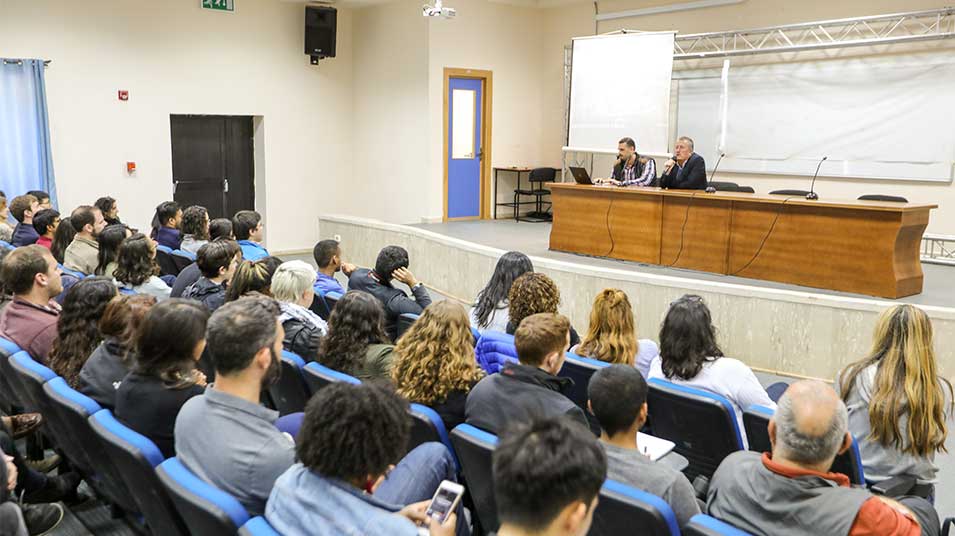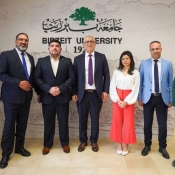Harvard students witness first-hand the effects of the Israeli Occupation in a visit to Birzeit University
On March 17, 2018, 120 students from Harvard University visited Birzeit University’s campus as part of the 2018 Palestine Trek, which aimed to introduce students to the realities of Palestinian life under Israeli Occupation.
As part of their visit to Birzeit University, students met with Bassem Al-Tamimi, whose daughter, Ahed Al-Tamimi, was recently detained by Israeli soldiers and has become a symbol of the Israeli Occupation’s brutality and violence.
After screening a brief video retelling Ahed’s experiences – the shooting, killing, and arrests of her family members by Israeli soldiers – her father shared some of his own: “I was arrested nine times, and during one of them, I was tortured so brutally that I fell into a 10-day coma. I was released on the same day that my sister was killed by Israeli bullets. My wife, the mother of my children, was arrested four times and was shot in her stomach.”
“This is the bulk of Ahed’s memories – tanks, shooting, arrests, and killings,” added Bassem. “Ahed is not an out-of-control girl; she merely reacted to the sight of her cousin getting shot 20 minutes earlier. Ahed wanted to become a soccer player, but the Israeli Occupation stole her dream.”
Tamimi thanked the students for their efforts and interest in the Palestinian cause and Ahed’s case, saying, “I really appreciate you coming here and making the effort, but more is needed. I call upon you to raise your voice and speak out against these injustices that we’ve been facing since 1967.”
Professor of International Studies at Birzeit University Dr. Ali Jarbawi presented a brief overview of the Palestinian-Israeli conflict to the students and the experiences of life as an occupied people.
“I remember giving a course on the Palestinian-Israeli conflict – part of a program for internationals – and this young student asked me to define the occupation. I gave her a technical definition, which I though sufficed for the time being. But the question kept nagging at me in the following days, so, during a lecture a couple of weeks later, I told her that we live the occupation every single day. There is no way to define such an entrenched part of our lives,” said Jarbawi.
After the brief introduction, Jarbawi answered students’ questions on the viability of the two-state solution, the reconciliation efforts, the effects of civil society interventions on holding the coherence of the Palestinian community, and the so-called deal of the century.
Sam Bahour, a Palestinian-American entrepreneur, shared his experiences with Palestine, both as someone who watched the unfolding of the Intifada on TV in Youngstown, Ohio, and someone who has been living in Palestine for the past 25 years.
“There are two sides to the Israeli Occupation’s effects on Palestinians,” Bahour explained to the students. “There are the tangible effects, such as the checkpoints, the apartheid wall, the settlements, and there are the intangible effects, such as the Israeli control on our natural resources, the electromagnetic spectrum, and the permits system – a Palestinian farmer who is separated from his land by the apartheid wall needs three permits to till his land: one to get through the gate, one to do the actual farming, and one for his donkey.”
Bahour also discussed the Boycott, Divestment, and Sanctions Movement with the students. “The BDS Movement is a tool to expose the heinous Israeli acts and violations. It allows us to inform the rest of the world of the real situation on the ground here in Palestine.”







